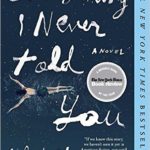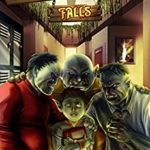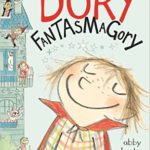 Apologies to anyone who adores Philippa Gregory, but I almost had to put down her book The Other Boleyn Girl when I was halfway through. She had a line of dialogue that read something like, “Oh Anne, you’re such a drama queen.” And I was gone. I finished the book, but she had lost all credibility with me as a writer. No one in the 1500s would have used that very modern term.
Apologies to anyone who adores Philippa Gregory, but I almost had to put down her book The Other Boleyn Girl when I was halfway through. She had a line of dialogue that read something like, “Oh Anne, you’re such a drama queen.” And I was gone. I finished the book, but she had lost all credibility with me as a writer. No one in the 1500s would have used that very modern term.
Which brings us to an interesting question . . . is it possible to write engaging and popular historical fiction that is accurate and true to the time period, but also lively and entertaining? I think so. And when you are writing for children, it’s even more important that you take this challenge seriously. Why? Because kids have little knowledge of actual history, which means if they read it in your book, they are likely to believe it happened just that way.
 I have written six works of fiction set in World War II. Each is based on at least one person I interviewed who actually lived the experiences depicted in my stories. My two books for adults, Remember Wake and Dancing in Combat Boots, are mostly true. Having found good sources, I didn’t need to embellish much. But my children’s books, The Home-Front Heroes Series, are different. Those books are about 50% true to the narrative that was told to me and 50% made up. Why? Because kids come at historical fiction with the preconceived notion that history is boring. It is my job to convince them it’s not.
I have written six works of fiction set in World War II. Each is based on at least one person I interviewed who actually lived the experiences depicted in my stories. My two books for adults, Remember Wake and Dancing in Combat Boots, are mostly true. Having found good sources, I didn’t need to embellish much. But my children’s books, The Home-Front Heroes Series, are different. Those books are about 50% true to the narrative that was told to me and 50% made up. Why? Because kids come at historical fiction with the preconceived notion that history is boring. It is my job to convince them it’s not.
So with my children’s books, I add in story lines that did not happen to the real person I interviewed, but could have. They relate directly to the real-life experiences of kids during World War II, from scrap-metal collecting contests to war bond drives to building homemade radios.
I sprinkle in slang from the time period, but not too heavily. A bit of period slang adds color to a novel. Too much of it sounds corny.
I also sprinkle in wartime details that are not strong enough to support an entire story line, but add texture to the novel. I might refer to a propaganda poster like “Loose Lips Might Sink Ships” or I might show my character mixing drops of yellow coloring into oleo to make it look like butter (which was rationed).
How do I find these telling details? I do a lot of research before I start to write. A lot. To be a good historical fiction writer, you must be as interested in conducting research as you are in writing. Even if you rely on first-person accounts, as I do, you are going to spend a great deal of time poring over nonfiction books on the time period, reading other well-written novels, and scouring the internet.
 You read first to get a big-picture view of your time period. Then you narrow it down to the particulars that relate to your project. Then you go even deeper, looking for those obscure and vibrant details that will bring your story to life.
You read first to get a big-picture view of your time period. Then you narrow it down to the particulars that relate to your project. Then you go even deeper, looking for those obscure and vibrant details that will bring your story to life.
Because your readers didn’t live in that time period (and neither did you), use your best sensory writing. Make me see, hear, smell, taste, and feel your character’s world. Put me in her shoes, but watch out for “info dumps,” those times when authors insert themselves to “tell” readers what they think we need to know. We don’t need a paragraph in which you describe the exact outfit your character is wearing. We need a line or two in which she comments or thinks about how tight her bonnet fits or how itchy her wool stockings feel. Let it come from her, not you.
So how do you know when you’ve done enough research and can start to write? Easy. When the research starts to repeat itself, you have enough. From that point on, let the plot and the characters tell you what more you need to know as you write.
Not every great tidbit you uncover will make it into your story. You’ll have to leave out some good stuff. But that’s okay. Gives you motivation to write the next book!
~~~~~~~~~~~~~~~~~~~~~~~~~
Teresa Funke is the award-winning author of six works of fiction for adults and children based on true stories from World War II. For more information about her and her books, visit her website and check out her popular inspirational blog Bursts of Brilliance for a Creative Life. Teresa can also be found on Facebook, Twitter, LinkedIn, and You Tube where you’ll find her writing tips, bursts of brilliance, and other writing-related videos.





